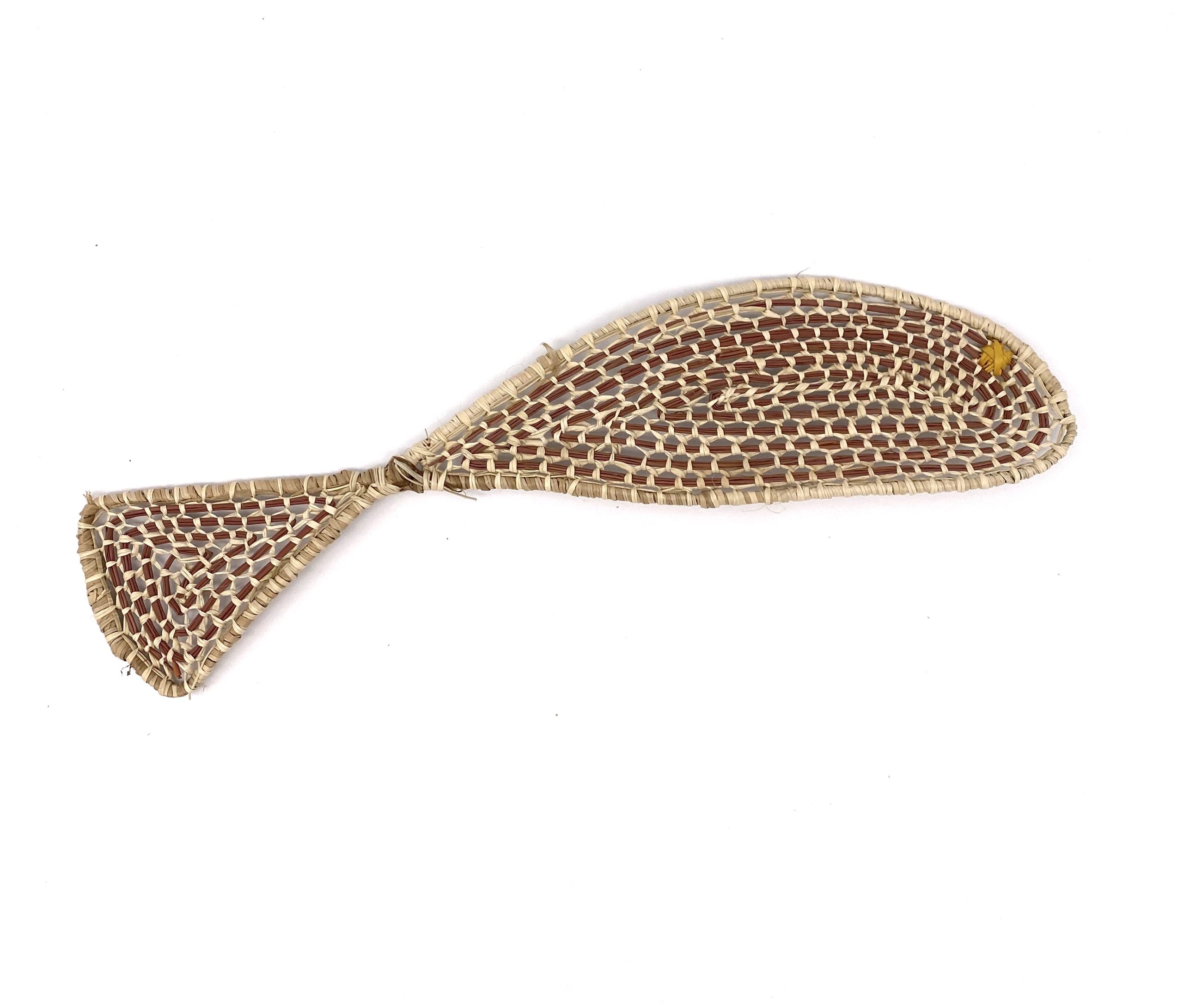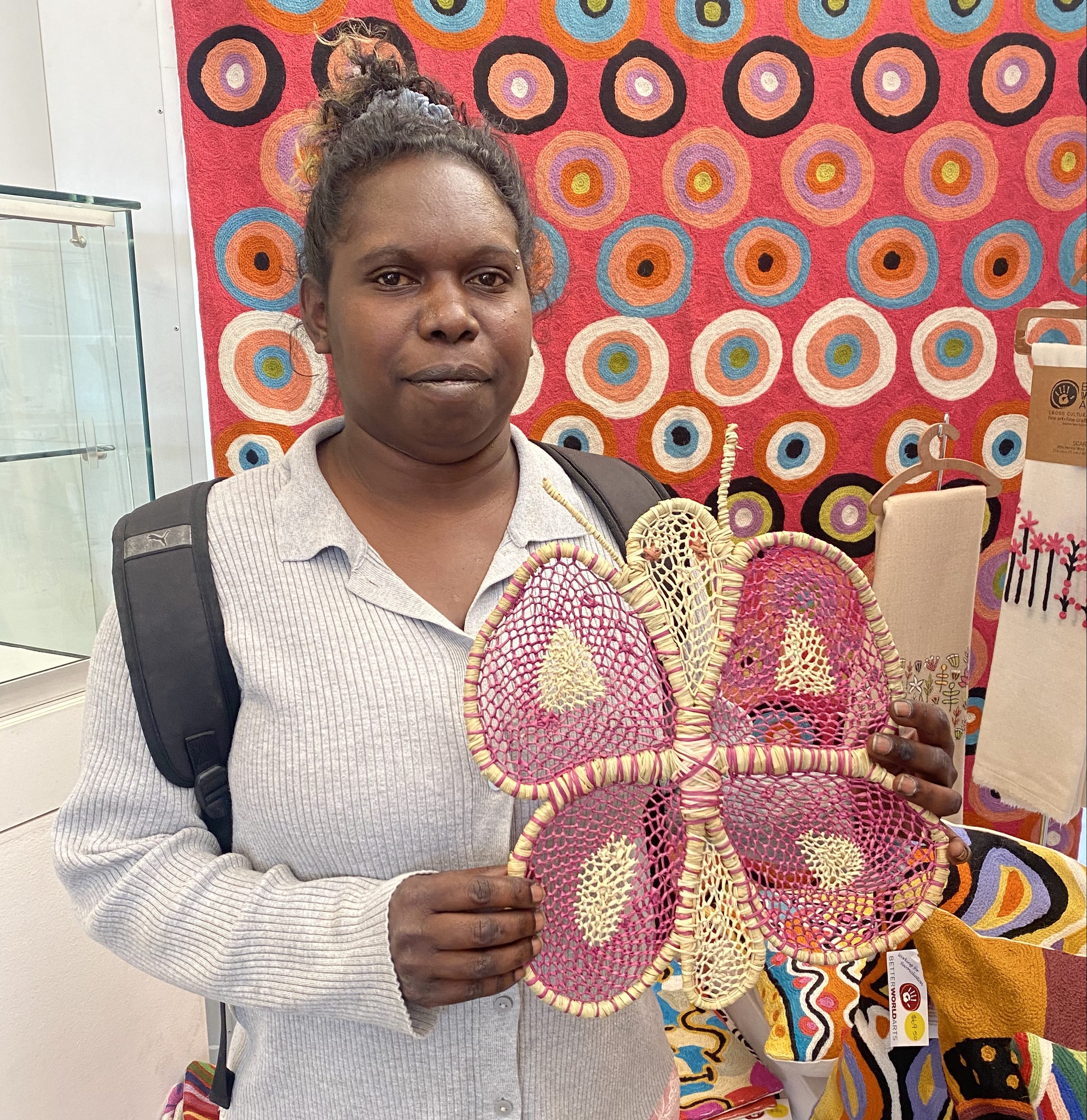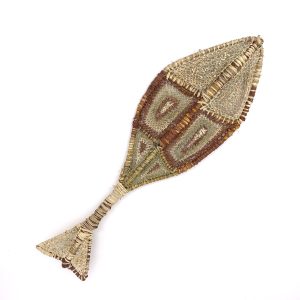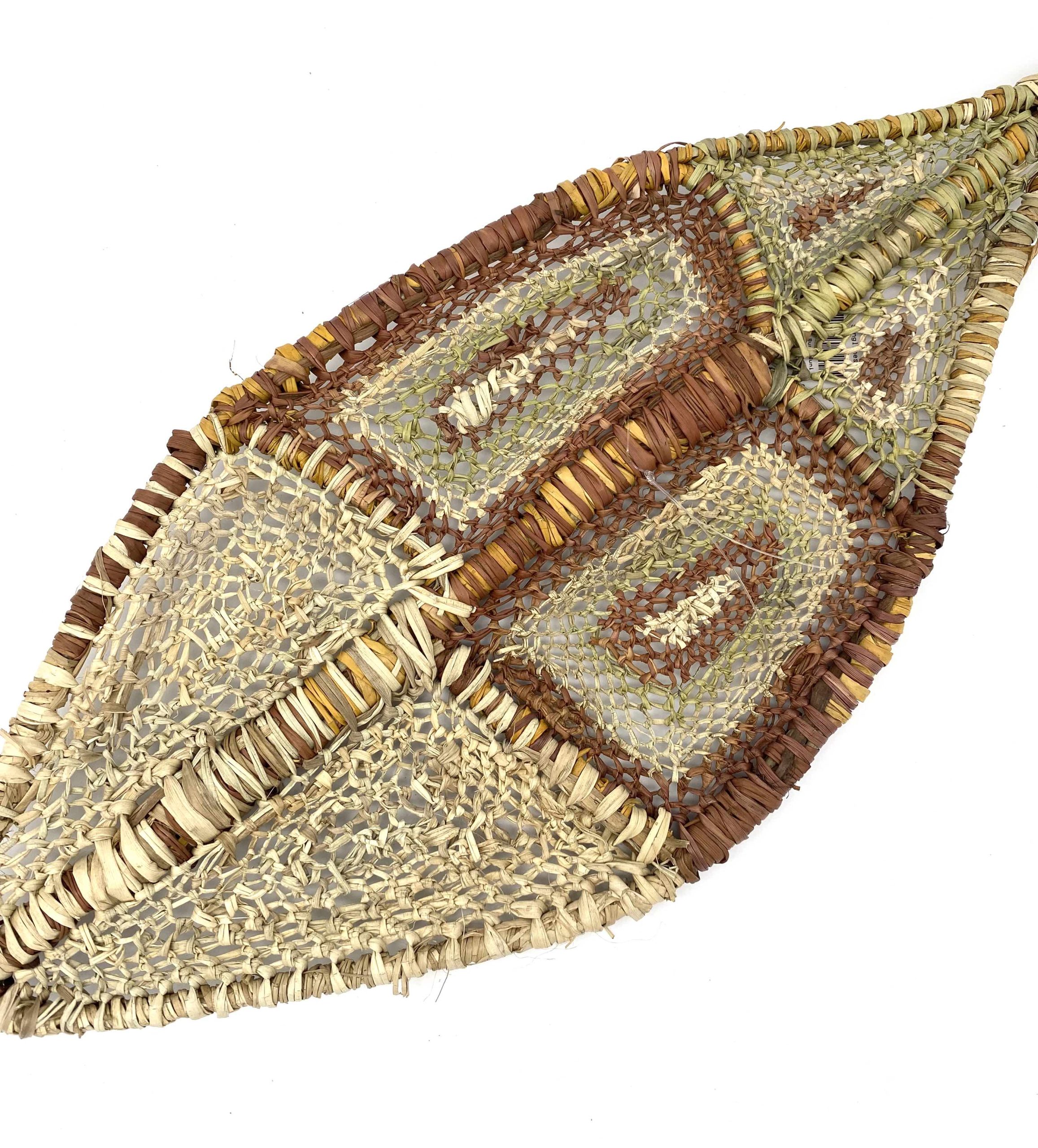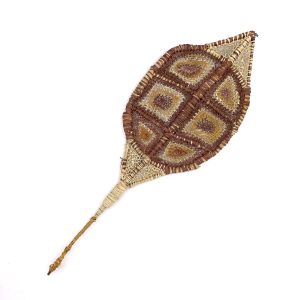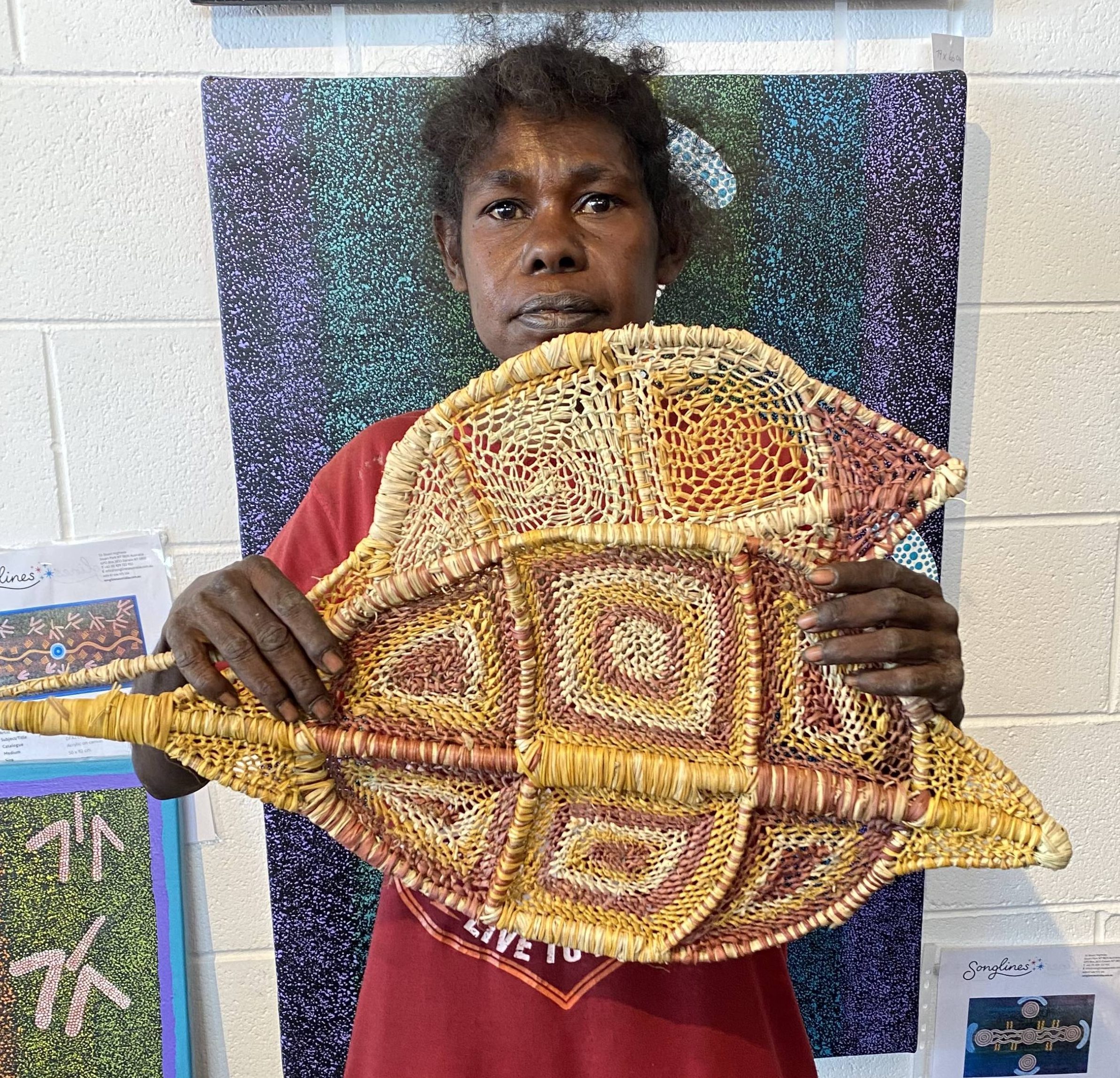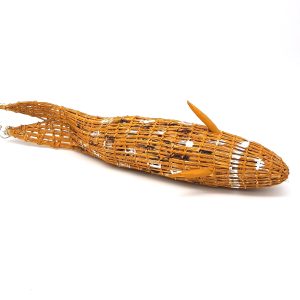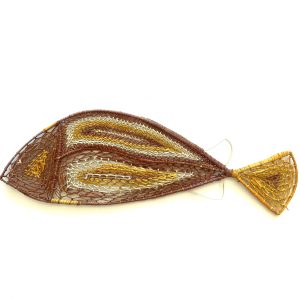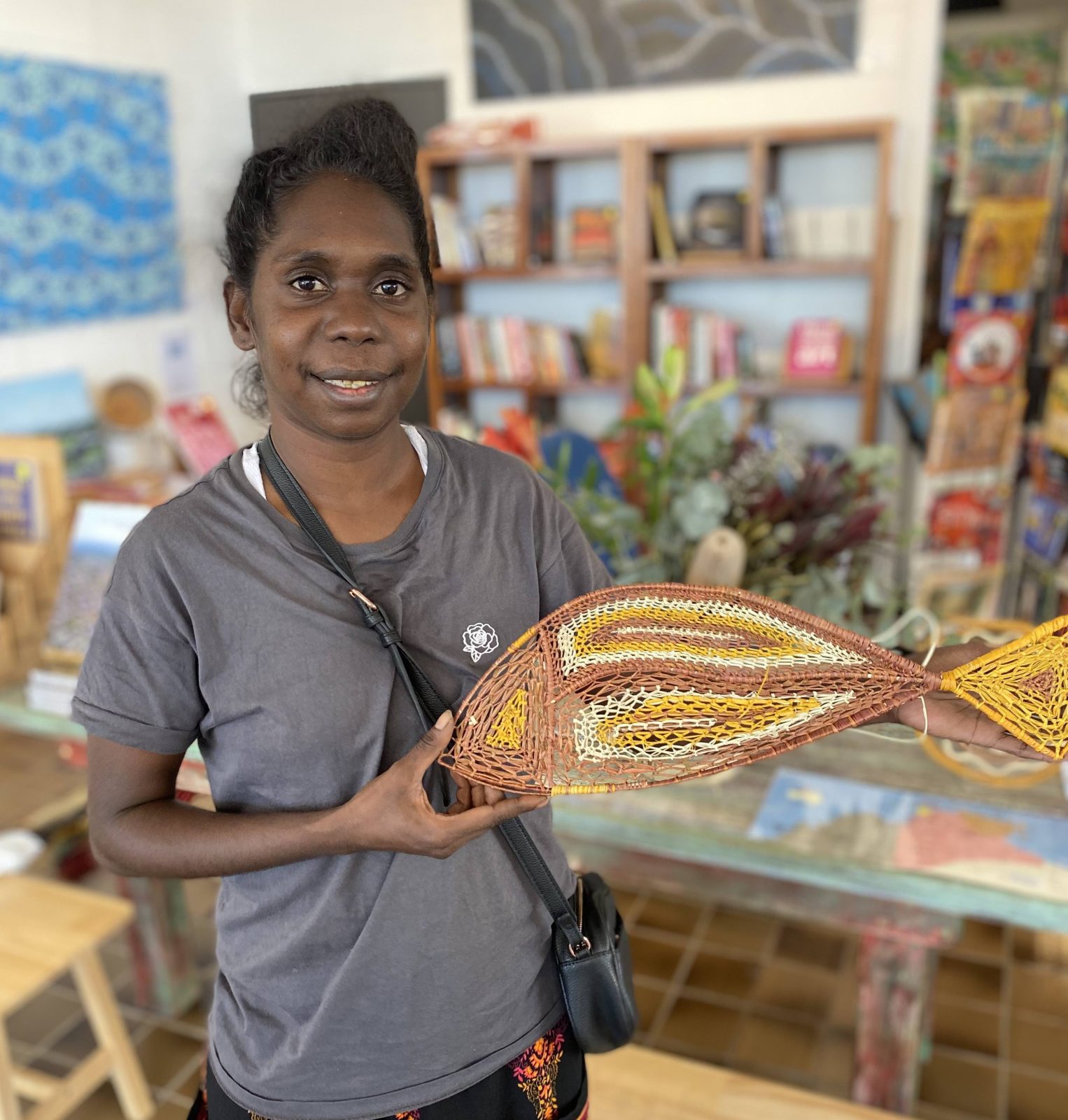Description
Contemporary Arnhem Land weavers are renowned for their beautifully executed Pandanus weavings and use of local dyes to create a wide palette of colours. Only women collect and process Pandanus. People often ask about how weavings are priced and we explain the various laborious and time consuming processes involved in creating a weaving.
The process
Collecting Pandanus
This is the first part of the process. Only the new growth (erect shoots emerging from the top of the tree) is used and the ladies use a ‘hook stick’ to harvest as they are usually high and beyond reach. It requires strength, skill and knowledge of which trees/places yield the best source. Pandanus grows best in areas that experience seasonal dampness or are near watercourses. The ladies may have walk long distances to find the right grove and then carry their haul back. It is a collaborative process and children will often join them. Harvesting is easiest in the wet season when Pandanus trees everywhere produce new growth.
Stripping
There are a number of steps involved in stripping Pandanus and it is surprisingly difficult to do. An experienced person makes it look easy! On either side of the leaf are thorns/barbs running in the opposite direction to the stripping action and these need to be avoided.
Dyeing
This is almost always done over an open fire in large pots. Colours may be roots, berries, flowers or, in the case of green, a part of the Pandanus plant. Some of the dyes are seasonal and/or very location specific. Things may be added to the dye mix to strengthen and change colours, such as ash. The weavers take great care and pride in creating vivid colours and often will trade dyes and additives. The usual time to dye is immediately after the Pandanus has been stripped.
Weaving
A range of traditional, borrowed and innovated weaving techniques are used in contemporary Pandanus weavings. This mat is executed with traditional techniques and incorporates an innovation with the structural (spoke) fibres being twisted in the gaps to create an effect.
References Twined Together (Kunmadj Ngalehnjaleken)
In 2005 Injalak Arts published Twined Together (Kunmadj Ngalehnjaleken) in collaboration with academic and author Dr Louise Hamby (editor). This is now the definitive text; a unique reference on fibre works from Western Arnhem Land, Northern Territory.
“This book is a guide for those with artistic, anthropological, linguistic, historical and fibre interests, providing insight into the previously unexplored complexities of fibre art from the region. Photographic essays feature collection, preparation, making and special features such as handle variations. The women artists who make the bags, baskets and mats are Kunwinjku speakers.”
Lavishly illustrated with over 600 photographs
ISBN: 0 646 44608 8 / 0646446088

